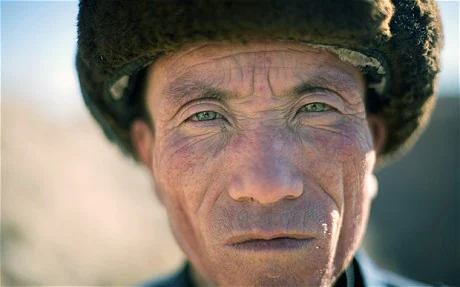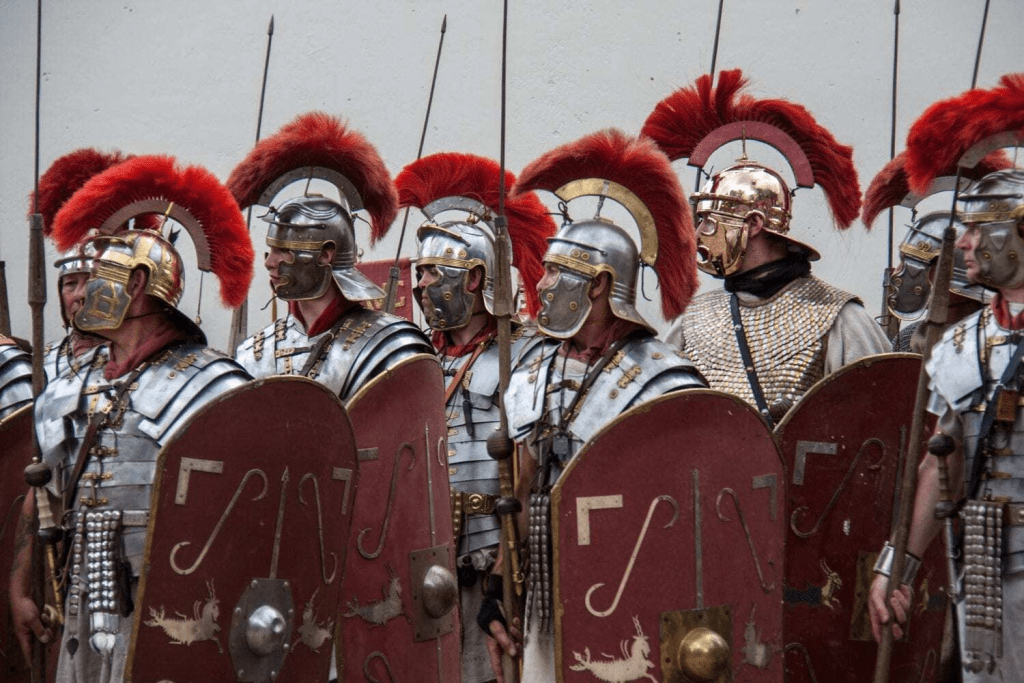For over a century, one remote Chinese village has stirred the curiosity of historians, archaeologists, and geneticists alike. Tucked away in the arid Gansu province, the village of Liqian has attracted attention not for ancient monuments or dramatic ruins, but for something far more human its people. With fair hair, lighter skin tones, and even green or blue eyes, some villagers appear strikingly different from the broader Han Chinese population. Could their features be a clue to a forgotten Roman presence in China nearly two millennia ago?

The Legend of the Lost Legion
The roots of this mystery trace back to the Battle of Carrhae in 53 BCE. In that brutal encounter between the Roman Republic and the Parthian Empire, thousands of Roman legionaries were killed or captured. Ancient historian Pliny the Elder later speculated that a group of these soldiers might have been moved eastward by the Parthians as mercenaries or prisoners of war.
Some scholars believe these legionaries could have continued marching across Central Asia and eventually reached western China. According to this theory, a small contingent of them might have settled in what is now Liqian. The idea seems far-fetched at first, yet there is historical evidence suggesting the Chinese encountered mysterious Western warriors centuries later.

The Chinese Records and “Fish Scale Formation”
One of the strongest historical arguments for a Roman presence in China comes from Chinese military chronicles. Around 36 BCE, the Han Dynasty waged a campaign against a group of rebellious nomads in the region. These records mention enemy soldiers who fought in a unique “fish scale formation” an advanced battle technique that some experts argue resembles the Roman testudo or tortoise formation.
Video:
Roman POWs in China? – The Fate of Crassus’s Lost Legions
This peculiar description has fueled speculation that those warriors were not typical Central Asian fighters. They may have been battle-hardened Roman veterans, possibly descendants of the soldiers lost at Carrhae. Could they have wandered so far and integrated into distant civilizations?
Liqian and the People’s Puzzle
Liqian is more than just a name on a map. The town was part of the ancient Silk Road, connecting China with the West. While there are no direct Roman ruins in the area, the village’s reputation grew in the 20th century as researchers began noticing the unique physical traits of its residents.
Some villagers have taller builds, deeper-set eyes, and even facial structures that appear more Mediterranean than East Asian. These features sparked years of fascination, especially during the 1990s and early 2000s, when Chinese media highlighted the community as a possible Roman outpost.
Tourism followed, and so did further academic interest. However, for all the excitement, the evidence remained circumstantial until modern science joined the conversation.

What DNA Has to Say
In the early 2000s, researchers from Lanzhou University conducted genetic tests on some Liqian villagers to explore the Roman theory. The results were surprising but not definitive. About fifty six percent of their DNA showed markers associated with Caucasian ancestry, which fueled media speculation about a Roman connection.
Video:
The Romans who settled in China
However, scientists pointed out that the presence of such genes does not necessarily prove a direct link to Rome. Central Asia has long been a crossroads of civilizations. It is entirely plausible that the genetic diversity came from later European traders, settlers, or other migratory groups.
More comprehensive studies later cast doubt on the theory. A 2007 study concluded that the DNA of Liqian villagers was overwhelmingly East Asian, consistent with surrounding populations. While some genetic traces might suggest outside influence, they did not point specifically to Rome.
Between Myth and Mystery
Despite the inconclusive evidence, the legend of Roman legionaries in China remains a captivating narrative. It taps into something deeply human the desire to find hidden connections across time and geography. Could a group of disciplined soldiers, uprooted by war, have found refuge thousands of miles from home?
Whether or not the theory holds up to scientific scrutiny, it has sparked dialogue and wonder. It reminds us of the global currents that shaped human history long before the modern era of planes and satellites. The Silk Road was more than a trading route. It was a corridor of culture, language, and perhaps even soldiers lost to time.

A Legacy Beyond Borders
Today, Liqian stands as a living symbol of the Silk Road’s complex legacy. While no one can confirm with certainty whether Romans once stood on its soil, the story remains a source of pride and curiosity for locals. Statues of Roman soldiers can be found in the village, and some families continue to believe they are descendants of ancient warriors.
Maybe the Roman story in Liqian is more legend than fact. Or maybe it is a buried truth waiting for the right evidence to surface. Either way, it reminds us how intertwined our histories really are and how every corner of the world may hold a forgotten chapter worth uncovering.


